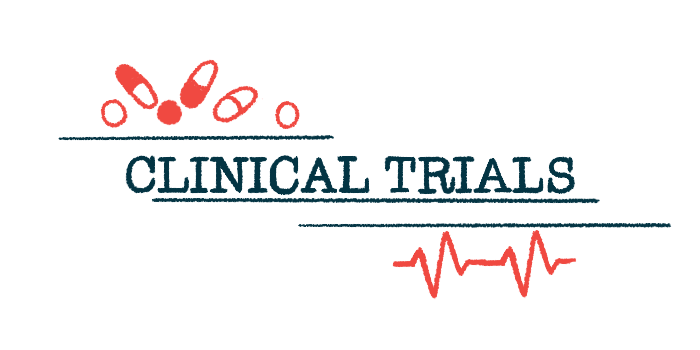Nexviazyme outperforms Lumizyme in COMET trial
Patient-reported outcomes from the Phase 3 trial deemed 'clinically meaningful'

More late-onset Pompe disease (LOPD) patients treated with Nexviazyme (avalglucosidase alfa) achieved clinically meaningful improvements in patient-reported outcome (PRO) measures related to symptoms, daily life impacts, and life quality than those treated with Lumizyme (alglucosidase alfa).
That is according to new analyses from the COMET Phase 3 clinical trial, which showed that outcomes favoring Nexviazyme included changes in shortness of breath, fatigue/pain, morning headache, and overall fatigue. More patients on Nexviazyme regained the ability to perform daily life activities they had lost.
“These data support [Nexviazyme] as a new potential standard-of-care therapy for LOPD,” the researchers wrote.
The study, “Effect of avalglucosidase alfa on disease-specific and general patient-reported outcomes in treatment-naïve adults with late-onset Pompe disease compared with alglucosidase alfa: Meaningful change analyses from the Phase 3 COMET trial,” was published in Molecular Genetics and Metabolism. It was funded by Sanofi, which markets Nexviazyme and Lumizyme.
Both Nexviazyme (sold as Nexviadyme in Europe) and Lumizyme (sold as Myozyme in Europe) are approved enzyme replacement therapies (ERT), which aim to provide Pompe disease patients with a lab-made version of the acid alpha-glucosidase (GAA) enzyme that they lack.
Nexviazyme is designed to deliver the enzyme more efficiently to muscle cells, which are affected most in Pompe.
The COMET Phase 3 trial (NCT02782741) compared the safety and efficacy of Nexviazyme against Lumizyme among 100 previously untreated children and adults with LOPD. Both treatments were given as an infusion directly into the bloodstream (20 mg/kg) every other week for nearly a year.
Top-line results showed that the trial met its main goal of demonstrating that Nexviazyme was not inferior to, or at least as effective, as Lumizyme in improving lung function and exercise capacity, with benefits sustained for up to nearly three years in an open-label extension study.
Those on Nexviazyme also saw greater improvements in a generic measure of life quality than those on Lumizyme, although these differences were not statistically significant.
More patient-reported outcomes
In the recent report, scientists described additional findings from a range of PROs collected during COMET, including Pompe-specific measures and generic quality-of-life questionnaires.
“Understanding the patient experience through PRO measures is essential for evaluating the impact of treatment on pain, function, symptoms, and HRQoL [health-related quality of life], particularly in rare diseases,” the team noted.
The Pompe Disease Symptom Scale (PDSS) was used to evaluate the severity of Pompe symptoms, while the Pompe Disease Impact Scale (PDIS) evaluated the impact of Pompe disease on daily life.
Patients on Nexviazyme were significantly more likely to see clinically meaningful improvements across multiple PDSS domains than those on Lumizyme, including shortness of breath, fatigue/pain, morning headache, and overall fatigue.
Moreover, the proportion of patients seeing an improvement in PDIS scores — in both activity performance and mood domains — was numerically higher with Nexviazyme, but not significantly so.
For both PDIS and PDSS, the proportion of patients with improvements across multiple domains was higher with Nexviazyme.
Some daily life activities return
Notably, more patients on Nexviazyme regained the ability to perform certain daily life activities that they had lost compared to those on Lumizyme.
Activities for which the highest percentages of patients saw a change included bending over to pick up something — achieved by 83% on Nexviazyme and 25% on Lumizyme — and standing up from a seated position (75% Nexviazyme and 50% Lumizyme).
In general, LOPD patients had scores reflecting a worse life quality than the general population prior to the start of the trial across multiple measures.
More patients on Nexviazyme achieved clinically meaningful life quality improvements across various domains compared to those on Lumizyme, although not all were statistically significant.
Finally, a significantly higher proportion of patients on Nexviazyme achieved meaningful improvements in the daily activities, disease-related symptoms, ability to breathe, and mobility domains of the Patient Global Impression of Change scale.
Altogether, “[Nexviazyme] demonstrated a greater therapeutic benefit on clinically meaningful change in HRQoL compared with [Lumizyme],” the researchers wrote.
Such improvements “show the additional value of [Nexviazyme] treatment to the patient beyond the clinically relevant improvements in respiratory function, ambulation, and functional endurance, previously reported in the COMET trial,” they added.
More broadly, the findings support the use of PROs for monitoring Pompe patients and treatment effects.
“This analysis suggests that the PROs used in the COMET trial are appropriate for use in the clinic to monitor the long-term benefits of emerging treatments in LOPD,” the team concluded.







